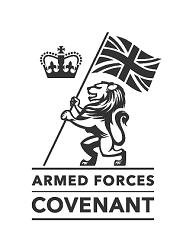|
|
|
Ypres Salient, Flanders & The Menin Gate {Page 3}...
This area of Belgium is known as Flemish Flanders and Ypres (Leper) is the principal city. The Ypres Salient was formed
by the Allied countries to halt and protect Germany’s advance towards the ports of Calais and Boulogne (the Race for
the Sea); this resulted in the First Battle of Ypres in 1914 – 19th October to 22nd November. The following
key battles after this were:
It must also be noted that
on top of the five main conflicts of the Salient, constant battles, offensives, exchanges and skirmishes took place in the
region during the whole of the Great War. Key and infamous names and locations from this area include Messines, Wytschaete,
Polygon Wood, Hill 60, Langemarck, the Lys, Sanctuary Wood, Ploegsteert Wood and Passchendaele to name but a few. Over 1,700,000 soldiers on both sides were killed or wounded in this region of Belgium during the War years not to
mention the uncounted numbers of civilians. The City of Ypres was constantly shelled by the Germans during
the whole of the war but was never taken. Nowadays it is fully restored and is resplendent with its cathedral and stunning
Cloth Hall. Flanders is now the resting place for many a soldier and is the home of numerous CWGC cemeteries
and superb memorials including:
"In Flanders fields the poppies blow Between the crosses,
row on row" - John McCrae. ......... o O o ......... If you need Military Bands or Assistance with Honouring Veterans - Please contact your local Royal British Legion. If sadly this is for a Military Funeral or Honouring Veterans at their Funeral, the best contact points are here. The Commonwealth War Graves Commission has the responsibility to ensure that 1.7 million people who died in the two world wars will never be forgotten. They care
for cemeteries and memorials at 23,000 locations, in 153 countries. The CWGC values and aims, laid out in 1917, are as relevant
now as they were over a 100 years ago.... ......... o O o ......... We have added a number
of further pages and Picture Galleries to our website for you of The National Memorial Arboretum, the Ypres Salient, Flanders & The Menin Gate, Nord Pas de Calais, Somme, Vimy Ridge, Verdun and World War 1 Main Page and seven underpinning pages. ......... o O o ......... The images below are: Picture 21 {0027} - The 1914 Christmas truce football match Memorial is at the actual site St Yvon near Ploegstreet.
This is the new stone Memorial positioned a few hundred metres from The Messines Ridge Cemetery. See Picture 12
{0137} for the original memorial to this event. Picture 22 {0128} - Canadian Memorial at St Julien at
Vancoover Corner between Ypres and Passchendaele. The plaque and column marks the battlefield where 18,000 Canadians withstood
the first German gas attacks in April 1915. 2,000 fell and lie buried nearby. Picture 23 {0127} - Canadian
Memorial at St Julien at Vancoover Corner. The sculpture of the brooding soldier is by Frederick Chapman Clemesta. In the
gas attacks on the Canadians the Germans deployed 168 tons of Chlorine gas. The memorial was unvielled on 8th July 1923. Picture 24 {0125} - Canadian Memorial at St Julien at Vancoover Corner. The memorial can be found at the
Junction of the N313 with Zonnebekestrat in the NE sector of the Ypres Salient. Picture 25 {0070} - The Stone
of Remembrance. Sir Edwin Lutyens was the principal architect for the CWGC and he designed these memorials to remember the
fallen in cemeteries with a 1,000 or more that are laid to rest. Picture 26 {0069} - Sanctuary Wood Cemetery.
This is adjacent to the Hill 62 Canadian Monument where there is also a museum and preserved trenches. The road going past
the cemetery is called Canadalaan, and this runs from the Menin Road to the Hill 62 Memorial commemorating the June 1916 battle
of Mount Sorrel. Picture 27 {0068} - The grave of Lieutenant Gilbert Talbot MC in whos's memory the Toc
H organisation was founded. Picture 28 {0067} - The Cross of Sacrifice at Sanctury Wood Cemetery. Picture 29 {0066} - Sanctuary Wood Cemetery. The wood was given its name because early in the war soldiers could
shelter and gain sanctuary from battle, following shelling in November 1914 the name could hardly be considered appropraite,
but it remained. Picture 30 {0036} - The magnificently restored Cloth Hall in Ypes. The museum to
WW1, which used to be upstairs has now firmly gained its home on the ground floor since the middle of the last decade. These images are kindly provided by Ian Humphreys, RBL, and are his Copyright. You may click on the thumb nail images
for the original - these are high res images and may not be used for commercial purposes without full written consent from
Mr Humphreys. Each image is 3264 x 2448 pixels or 3008 x 2000 pixels and are several MB in size..
Enter content here Enter content here Enter content here |
||||||||||
AREA17: So that we may all remember those that served, those injured and those that fell for the peace
and security of all...

